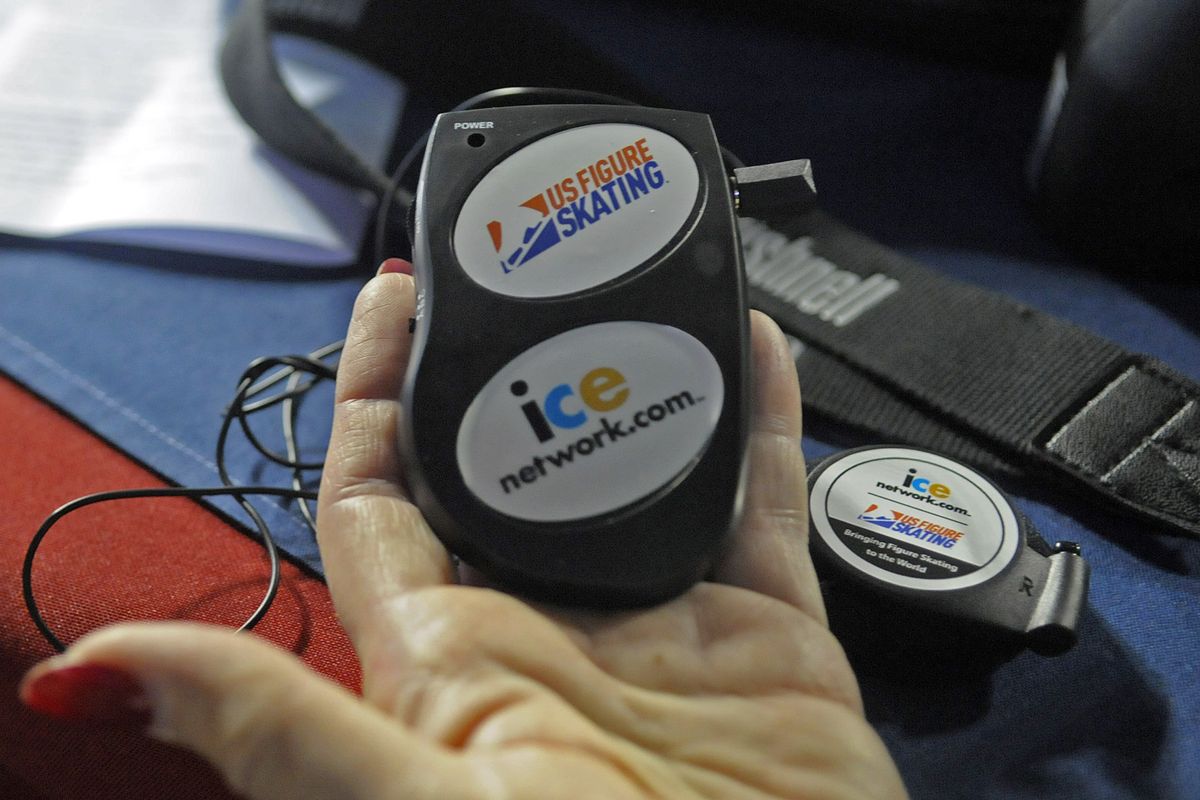Fireworks and ice
Commentary adds new spin for novice, hard-core fans

If the Seattle Seahawks had made it to the playoffs, Bob and Marianna Metke would have had a tough decision to make: football or figure skating.
But the Hawks didn’t come close, so the retired couple from LaConner, Wash., were seated among the thousands in attendance Saturday for Day 2 of the 2010 AT&T U.S. Figure Skating Championships in Spokane.
“We bought our tickets last year,” Marianna Metke said. “Bob’s been really great about all this, he’s a good sport.”
Normally, Bob Metke prefers pigskins to pairs, but thanks to a new experiment in technology at this year’s championships, he feels a little less like he’s on thin ice when it comes to the sport of figure skating.
Metke and his wife were among 1,000 people – the first in the doors Friday night – who were handed free receivers offering them a chance to tune in to commentary from skating officials and commentators.
The free headsets are wired to three channels, including one hosted by David Kirby, the chairman of the U.S. Figure Skating Technical Panel Committee. The other channels have live commentary from NBC and icenetworks.com.
“It is fantastic for somebody who doesn’t know what it’s all about,” Bob Metke said.
On Saturday, Metke listened to a technical analysis by Kirby of the senior pairs events. As Amanda Evora and Mark Ladwig took the ice – and skated into a second-place finish and a spot on the Olympic team headed to Vancouver, B.C., next month – Bob Metke was ahead of their every move.
Metke divided his time between a lounge airing the WSU vs. Stanford basketball game and various NFL playoff games and his seat in Section 109 at the Arena. Meanwhile, the voice in his ear told him how many revolutions are behind each spin and the technical level of double solo axels and the throw triple-loop.
“You see these people going round and round and spinning and jumping, and they tell you what you are looking at,” Metke said. “I think without this, after 10 days I might be a little burned out.”
“Skating is always pretty to watch,” his wife added. “This adds a new level of engagement.”
The most fanatical followers of figure skating were also thrilled about the new technology, which in addition to the headsets included an opportunity to send questions via text message to the announcers.
“Even when you know a lot about skating, the technical piece is just really great,” said Doug Linneman, a Philadelphia resident and member of a skating fan club called The Splinters. Members, numbering more than a dozen from all over the country, travel to most major skating events.
While live news broadcasters, like Scott Hamilton broadcasting on NBC, provide a level of superior knowledge about the sport, the technical side is less about entertainment and more about the nuts and bolts of figure skating, Linneman and his cohorts said.
“This really provides an education,” said Kathryn Yates, a Splinter from Virginia. “When you see the final score, it helps it all make sense.”